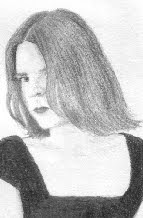Non-Fiction 5 Challenge #4
 Although it’s considerably shorter, Australian history has something in common with European history: a preponderance of men. Seeking to redress that imbalance, this book details the colonial lives and works of five pre-Federation (1901) governors’ wives, one from each state except Queensland (as insufficient records survive to write about a Brisbane vice-regal wife). It looks at how these women carried out their duties at the centre of high society, while following a pattern of perfection laid down on the other side of the world.
Although it’s considerably shorter, Australian history has something in common with European history: a preponderance of men. Seeking to redress that imbalance, this book details the colonial lives and works of five pre-Federation (1901) governors’ wives, one from each state except Queensland (as insufficient records survive to write about a Brisbane vice-regal wife). It looks at how these women carried out their duties at the centre of high society, while following a pattern of perfection laid down on the other side of the world.
It’s always interesting for me to read about a part of history that I don’t know much about (or even thought much about). And reading about Australian history makes me feel a little less guilty for knowing so little about it, and finding it so dull compared to that of Europe. It turned out to be more biography than history, but it was still a chance to absorb more information so I didn’t really mind. What did bother me was the style in which the book was written; at the beginning it reminded me awkwardly of a really long high school essay.
By the end I decided that it wasn’t a book so much as a feminist thesis organised and sold as one. It felt like it had been written for love of the theme (comparing and contrasting governors’ wives with each other and the Victorian feminine ideal) than for love of the subject. As such it compared badly with the two other non-fiction works which overlapped this in reading time, which simply told tales of people and objects and managed to entertain in the process. It didn’t help, either, that any mention of Jane Franklin made me think of Nancy Cato’s novel Northwest by South, about John Franklin’s governorship and later (doomed) search for the Northwest Passage. The comparison didn’t do the non-fiction any favours.
There was, naturally, an imbalance toward the later wives, such as Audrey Tennyson (South Australia) and Elizabeth Loch (Victoria); more information has survived from the end of the century than from earlier. With Jane Franklin (Tasmania) I was able to fill in the gaps from the novel, but I was left wanting to know more about Eliza Darling (New South Wales). My favourite was Mary Anne Broome (Western Australia), the one who fit the feminine ideal least. As a widow with two children she married a man who was eleven years her junior (and a New Zealand sheep farmer, to boot), then continued her whole life to earn her own income through her writing. The ‘Paid Work’ chapter was dedicated almost entirely to her, which made up for the comparative lack of detail elsewhere. I don’t know where you’d find copies of her books today, but I would like to read more about her life. She and her husband Frederick adored each other, and she once wrote that he ‘possesses such extraordinary and revolutionary ideas on the subject of cooking, that I am obliged to banish him from the kitchen altogether.’ As this related to an incident in which he exploded a bottle of yeast all over the ceiling, I can only imagine what those ideas might have been.
Rating: C











No comments:
Post a Comment